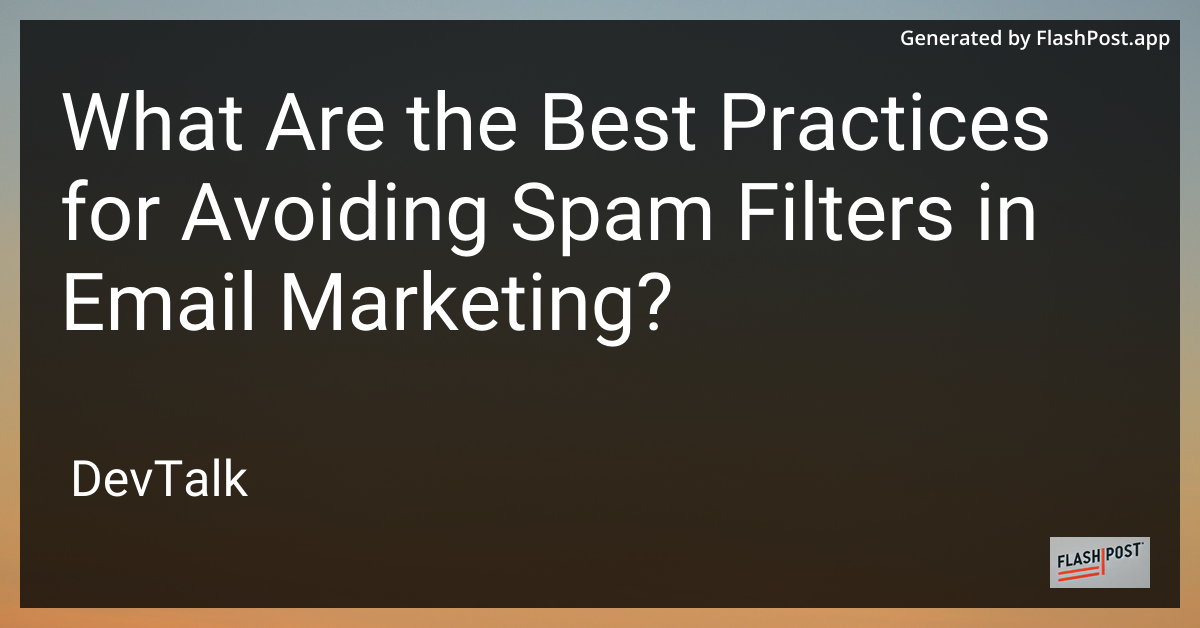What Are the Best Practices for Avoiding Spam Filters in Email Marketing?

Best Practices for Avoiding Spam Filters in Email Marketing
Email marketing is a powerful tool when used effectively, but getting your emails delivered to the inbox rather than the spam folder is a crucial part.
Spam filters are getting smarter and more sophisticated at recognizing potential spam content. This article will outline the best practices to help ensure your email marketing campaigns effectively bypass these filters.
1. Build a Quality Mailing List
The foundation of a successful email marketing campaign is a quality mailing list. Avoid purchasing lists; instead, grow your list organically by offering value to your subscribers. Ensure that individuals on your list have opted in to receive your emails. This establishes trust and increases engagement, both of which contribute to better inbox placement.
2. Use a Recognizable Sender Name and Email Address
Consistency is key when it comes to the sender's name and email address. Use a recognizable and constant identity that your subscribers will immediately recognize. This helps to build credibility and promotes a stronger connection with your audience.
3. Maintain Email Content Relevance
Your email content should be relevant and engaging for your target audience. Avoid using spammy language such as "Free," "Guaranteed," and excessive punctuation like "!!!" or "???". Personalize your emails for better engagement and relevance to the recipient, which are important signals for spam filters.
4. Ensure Proper Email Formatting
Proper email formatting is critical in avoiding spam filters. Ensure your emails are well-coded and check for grammatical errors. Create a balance between text and images, as too many images or large image files might trigger spam filters.
5. Authenticate Your Emails
Implement authentication protocols like SPF, DKIM, and DMARC. These help to verify your identity and increase your deliverability rates by proving to ISPs that your emails are not forged.
6. Include a Clear Unsubscribe Link
Providing a clear and easy way for subscribers to unsubscribe from your mailing list not only complies with laws like CAN-SPAM but also maintains a healthy email list. This helps reduce complaints and indicates to spam filters that you are a legitimate sender.
7. Test Your Emails Before Sending
Testing your emails using tools that simulate spam checks can help identify potential red flags. This allows you to make necessary adjustments before launching your campaign.
8. Monitor Feedback and Perform Regular List Cleaning
Monitor your email marketing metrics, such as bounce rates, spam complaints, and engagement. Regularly clean your list by removing inactive users and addressing bounce issues to maintain a healthy sender reputation.
Conclusion
Avoiding spam filters requires a thoughtful approach to how you send and format your emails. By following these best practices, you can ensure higher deliverability and a better connection with your audience. For sender solutions, explore how to send emails in different frameworks:
- For sending emails in Laravel, check out these resources: Laravel Email Sending, Laravel Email Sending, and Laravel Email Sending.
- If you're working with SMTP, you might find this helpful: SMTP Email Sending.
- For sending emails with Perl, visit: Perl Email Sending.
By adhering to these strategies and leveraging the right technologies, you can significantly reduce the likelihood of your emails being marked as spam.